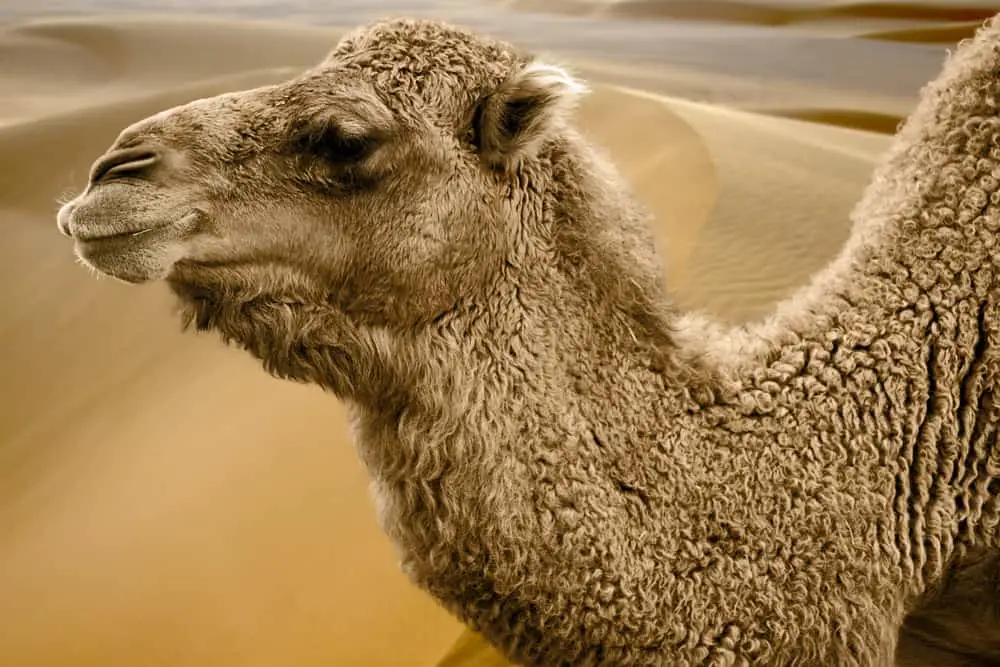Camelidae, commonly known as camelids, are a family of mammals that have adapted to living in harsh and arid environments. They belong to the order Artiodactyla and include four species: dromedary camels, Bactrian camels, llamas, and alpacas.
These animals have been domesticated for centuries and play an important role in agriculture and transportation in many parts of the world.
Camelids are unique creatures with several adaptations that allow them to thrive in desert conditions. Their ability to store water and withstand high temperatures makes them ideal for long journeys across barren landscapes. Additionally, their distinctive humps contain fat stores that can be used as energy reserves when food is scarce.
Despite being closely related to other hoofed animals such as cows and horses, camelids differ significantly in appearance, behavior, and biology. Understanding these differences is crucial for those who work with or study these fascinating creatures.

Tribes and Genus
- Tribe Lamini
- Genus Lama – New World camelids
- Tribe Camelini
- Genus Camelus – camels
The Four Species Of Camelids
Camelids are a family of even-toed ungulates that include llamas, alpacas, guanacos, and vicuñas. They share several common characteristics such as their long necks, padded feet with two toes each, and their ability to store fat in humps on their backs.
Camelids have been domesticated for thousands of years by indigenous peoples living in South America. These animals are used primarily for transportation of goods, wool production and meat.
Behavioral patterns are an important aspect of camelid biology. Socially, they tend to live in herds led by dominant males who mate with multiple females within the group. Camelids also exhibit unique anti-predator behaviors such as spitting or kicking when threatened.
Habitat preferences vary among the four species but generally occur at high elevations in arid regions where vegetation is sparse. Llamas and alpacas prefer grassy plains while vicuñas live in rocky areas near water sources like rivers or streams. Guanacos occupy both mountainous habitats and lowland deserts depending on the seasonality of resources available to them.
Understanding these behavioral patterns and habitat preferences can help us better manage populations of camelids both in captivity and in the wild without disrupting their natural ecology.
Domestication And Cultural Significance
The history of camelid domestication dates back to about 5000 years ago in the Andean highlands. The indigenous people have been using llamas and alpacas for transportation, wool production, meat consumption, and as a sacrificial animal in religious ceremonies. Llamas are known for their strength and endurance, which made them perfect for carrying heavy loads across long distances over rugged terrain. Alpacas on the other hand were bred primarily for their luxurious fiber that was used to create warm clothing and blankets.
Camelids hold an important place in Andean folklore and culture. They feature prominently in many traditional stories, songs, dances, costumes, and festivals. According to legend, Pachamama (Mother Earth) gave birth to two sons: Inti (the Sun God) and Mama Quilla (the Moon Goddess). She also created the first llama from her own hair so that her children could have something to ride on while traveling across the vast landscape she had created.
To this day, llamas continue to be revered by many indigenous groups who see these animals as sacred beings with divine qualities.
- Domestication
- History
- Dates back to 5000 years ago
- Uses
- Transportation
- Wool production
- Meat consumption
- Sacrificial animal in religious ceremonies
- Cultural Significance
- Folklore
- Feature prominently in traditional stories, songs, dances, costumes & festivals.
- Importance in religion/culture
- Revere llamas as sacred beings with divine qualities – In Incan mythology, llamas were believed to be the offspring of the goddess Pachamama and were seen as symbols of fertility and prosperity.
Adaptations For Desert Environments
Camelidae have evolved various adaptations that enable them to survive in the harsh desert environments. One of their most remarkable adaptations is water conservation, as they can go long periods without drinking water. This adaptation has been facilitated by the presence of a highly efficient kidney system that enables them to excrete concentrated urine while minimizing water loss. Additionally, they have thick fur coats which help reduce evaporation from the skin surface and protect against extreme temperatures.
Temperature regulation is another vital adaptation developed by camelids living in deserts. During hot weather conditions, these animals dissipate heat through their nostrils and mouth by panting, which increases evaporative cooling. They also regulate their body temperature by reducing blood flow to peripheral body parts such as limbs and ears where there are hairless areas with increased heat exchange. Furthermore, during cold nights when temperatures drop drastically, camels conserve energy by limiting heat loss through vasoconstriction (narrowing of blood vessels) rather than shivering like other mammals do.
| Adaptation | Description | Example |
|---|---|---|
| Water Conservation | Camelids can go extended periods without drinking water due to an efficient kidney system that minimizes water loss | Dromedary Camels can lose up to 30% of their body weight due to dehydration but still function normally |
| Temperature Regulation | These animals regulate their body temperature through vascular adjustments as well as effective means of heat dissipation through panting and sweating. | Alpacas have unique fleece fibers that allow air circulation helping maintain optimal core temperature |
In conclusion, camelids possess many extraordinary physiological adaptations allowing them to thrive in desert environments. From regulating body temperature with specialized mechanisms adapted for extreme fluctuations in climate conditions, to conserving water resources using advanced kidney systems; it is clear why these creatures stand out amongst others who inhabit similar habitats. Their hardiness serves not only themselves but humanity who benefit from their milk, fur and meat.
Unique Physical And Behavioral Characteristics
Camelids possess unique physical and behavioral characteristics that have enabled their survival in harsh environments. One adaptive mechanism is their ability to conserve water by producing highly concentrated urine, allowing them to survive for long periods without drinking.
Additionally, they can tolerate extreme fluctuations in temperature, with the ability to withstand temperatures ranging from below freezing to over 100°F. Evolutionary history has also played a significant role in shaping camelid traits.
Through natural selection, these animals developed thick fur coats that protect them from cold temperatures and strong winds. Furthermore, their padded feet enable them to traverse rocky terrain without injury, making them ideal pack animals for mountainous regions.
These adaptations demonstrate how camelids have successfully evolved over time to adapt to their environment and thrive as a species.

Differences From Other Hoofed Animals
Unique Physical and Behavioral Characteristics of the Camelidae family have always been a topic of fascination for researchers. These animals are known for their distinctive humps, long necks, and slender legs that enable them to survive in harsh environments. However, these traits are not the only factors that make camelids unique; they also possess an exceptional digestive system that allows them to consume herbs and plants that other hoofed animals cannot digest.
The stomach of a camelid is divided into three compartments: the rumen, omasum, and abomasum. This division enables them to break down tough plant fibers more efficiently than ruminants like cows or sheep.
When it comes to wool properties, camelids stand out from other domesticated animals. Their fiber has been used by humans for centuries due to its remarkable warmth retention abilities, softness, and hypoallergenic qualities. Camelid wool can be classified into two types: guard hair and undercoat fiber (down). Guard hairs are stiff outer fibers with less crimp compared to down fibers which are softer inner fibers with high crimp frequency.
Four characteristics distinguish the quality of fiber produced by different breeds within the family:
- Fineness
- Length
- Color
- Crimp
Together these traits determine how suitable the wool is for specific end-products such as clothing, upholstery fabrics or carpets. It’s important to note that while all members of the Camelidae family produce wool-like fibers, not all species yield commercially valuable quantities of fleece material – this variation depends on multiple factors including location, diet and genetics among others.
Studying And Working With Camelids
Breeding practices play a crucial role in the maintenance and improvement of camelid populations. These animals have been domesticated for thousands of years, with breeding techniques evolving over time to suit different purposes.
In South America, where alpacas and llamas are commonly raised for their fiber and meat respectively, selective breeding has led to distinct phenotypic variations between breeds that reflect differences in climatic conditions, altitude, and geography.
Meanwhile, in other parts of the world such as Australia and North America, camels are bred primarily for racing or as pack animals. Breeding programs in these regions focus on producing faster, stronger, and more resilient individuals.
The economic impact of camelids is significant across many countries worldwide. In Peru alone, which is home to approximately 80% of the global alpaca population, exports of alpaca products generate millions of dollars each year. Similarly, the Australian camel industry produces meat for both domestic consumption and export markets worth millions annually.
As demand for specialty fibers increases globally due to heightened interest in sustainable fashion practices, there may be opportunities for breeders to produce high-quality wool from exotic camelid species like vicuñas or guanacos. The potential value-added benefits associated with this niche market could provide additional revenue streams while also helping to preserve unique genetic resources within these herds.
Conclusion
Camelidae, also known as camelids, are a family of mammals that includes four species: the dromedary camel, Bactrian camel, llama, and alpaca.
These animals have been domesticated for thousands of years and hold cultural significance in many parts of the world.
Camelids possess unique adaptations for living in desert environments such as their ability to conserve water and tolerate extreme temperatures.
They also have distinct physical and behavioral characteristics including long necks, padded feet, and spitting behavior.
Unlike other hoofed animals, they do not have hooves on all four feet but rather two toes on each foot with toenails serving as protection.
Studying and working with camelids has become increasingly popular due to their adaptability and usefulness in industries such as transportation, agriculture, and fiber production.
Interestingly, it is estimated that there are over 40 million llamas and alpacas worldwide which highlights the importance of these animals in various cultures.
In conclusion, Camelidae are a fascinating group of mammals with unique adaptations for desert life.
Their cultural significance coupled with their usefulness across different industries makes them an important animal to study and work with.
With over 40 million llamas and alpacas around the world today, it is clear that these creatures will continue to play an important role in human society for years to come.
